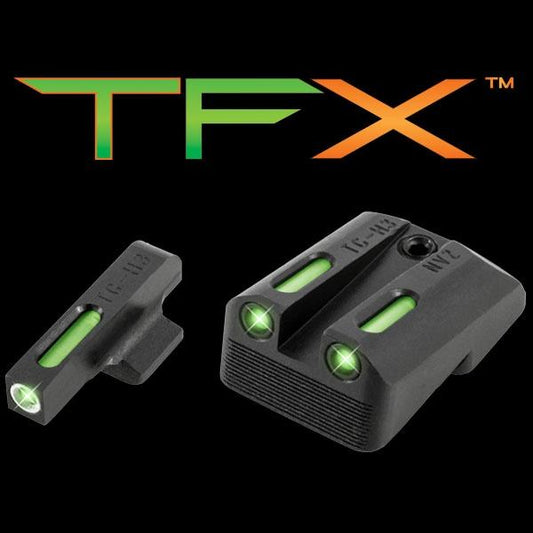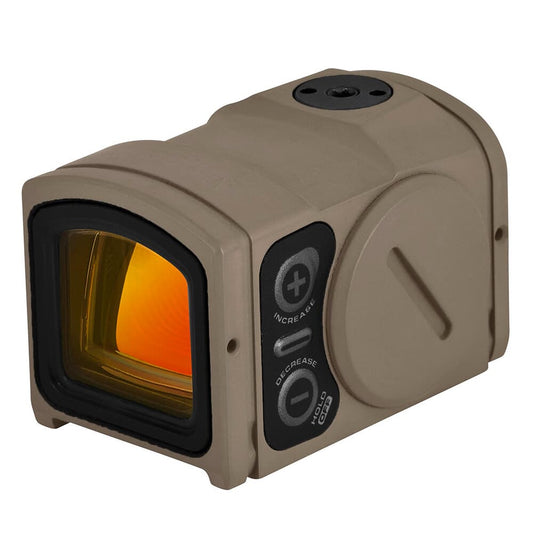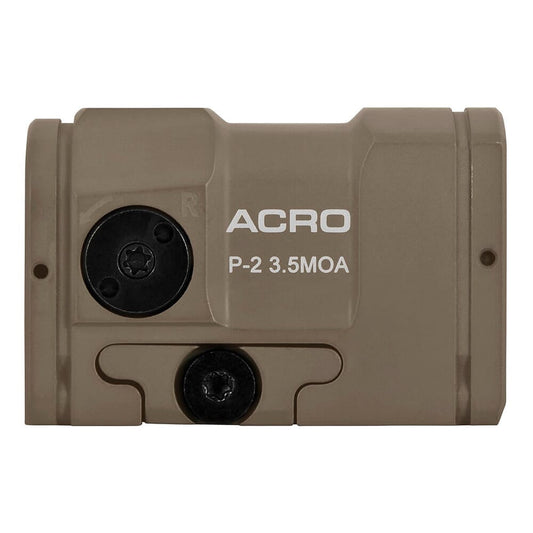

Truglo TFX Tritium/Fiber-Optic Day/Night Sights provide reliable performance for your 1911-style handgun, ensuring fast target acquisition in various lighting conditions. The combination of Tritium and Fiber-Optic technology delivers bright visibility day and night, enhancing your shooting accuracy. A compact, snag-free design optimizes your sight radius while maintaining durability for rugged use.
Built with a rust-proof FORTRESS FINISH and shock-resistant encapsulation, these sights are designed to withstand harsh environments. The distinct white ring around the front fiber optic allows for quick focus on targets, ensuring a clear sight picture. Battery-free operation means you always have reliable illumination ready when needed.
Features:
- SUPERIOR VISIBILITY for all-day shooting, ensuring you never miss a target.
- PERMANENT PROTECTION with FORTRESS FINISH, guarding against rust and wear.
- SNAG-FREE DESIGN for seamless holstering and quick draws.
- TRITIUM TECHNOLOGY provides exceptional brightness, even in low-light conditions.
- NO BATTERIES REQUIRED for hassle-free maintenance and reliability.
- INDUSTRY-LEADING CONSTRUCTION made to withstand oils and chemicals.
- COMPATIBLE FIT designed for Novak LoMount cut, fitting standard holsters.
- EXCEPTIONAL DURABILITY encapsulated to resist shock and impacts.
Technical Specifications Table
| Feature | Details |
|---|---|
| Front Sight Height | .270 inches |
| Rear Sight Height | .500 inches |
| Material | CNC-machined Steel |
| Finish | Rust-Proof FORTRESS FINISH |
| Dimensions | Compact, Snag-Free Design |
| Weight | Lightweight for easy handling |
What’s in the Box?
- Truglo TFX Tritium/Fiber-Optic Day/Night Sights
- Installation Instructions
Customer Reviews
"These sights are a game-changer! They glow brighter than anything I've ever used." – Alex R.
"Installation was straightforward, and I love how visible they are in low light." – Jamie T.
FAQ
How does the Tritium technology work? Tritium is a self-luminous radioactive isotope that emits a constant glow, ensuring your sights are always visible without the need for external light or batteries.
Are these sights easy to install? The TFX sights are designed for easy installation, particularly for Novak LoMount cuts. However, for optimal results, having a qualified gunsmith perform the installation is recommended.
Similar Models
Looking for more options? Check out our extensive collection of Truglo sights, including the Truglo TFO Sights for enhanced versatility and visibility. Explore the full lineup to find the perfect sights for your shooting needs.
You May Also Like
Here’s some of our most similar products people are buying. Click to discover trending style.








